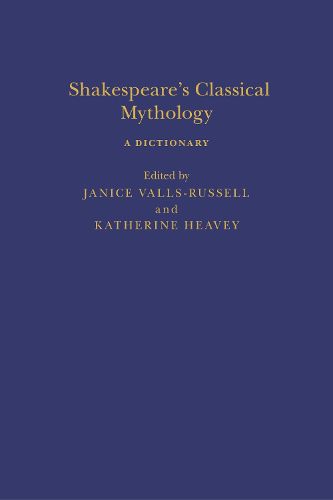Readings Newsletter
Become a Readings Member to make your shopping experience even easier.
Sign in or sign up for free!
You’re not far away from qualifying for FREE standard shipping within Australia
You’ve qualified for FREE standard shipping within Australia
The cart is loading…






Why does Bassanio compare himself to Jason? What is Hecuba to Hamlet? Is the mechanicals' staging of the Pyramus and Thisbe story funny or sad?
This dictionary elucidates Shakespeare's use of mythological references in an early modern context, while bringing them to life for today's audiences and readers, at a time of renewed critical interest in the reception of the classics and fascination with classical mythology in popular culture. It is also a precious tool for practitioners who may not always know quite what to make of mythological references.
Mythological figures, creatures, places and stories crowd Shakespeare's plays and poems, featuring as allusions, poetic analogies, inset shows, scene settings and characters or plots in their own right. Most of these references were familiar to Shakespeare's spectators and readers, who knew them from the writings of Ovid, Virgil and other classical authors, or indirectly through translations, commentaries, ballads and iconography.
This dictionary illustrates how, far from being isolated, a mythological reference may resonate with the poetics of the text and its structure, cast light on characters and contexts, and may therefore be worth exploring onstage in a variety of ways. The 200 headings correspond to words and names actually used by Shakespeare: individual figures (Dido, Venus, Hercules), categories (Amazons, Centaurs, nymphs, satyrs), places (Colchos, Troy). Medium and longer entries also cover early modern usage and critical analysis in a cross-disciplinary approach that includes reception, textual, performance, gender and political studies.
$9.00 standard shipping within Australia
FREE standard shipping within Australia for orders over $100.00
Express & International shipping calculated at checkout
Why does Bassanio compare himself to Jason? What is Hecuba to Hamlet? Is the mechanicals' staging of the Pyramus and Thisbe story funny or sad?
This dictionary elucidates Shakespeare's use of mythological references in an early modern context, while bringing them to life for today's audiences and readers, at a time of renewed critical interest in the reception of the classics and fascination with classical mythology in popular culture. It is also a precious tool for practitioners who may not always know quite what to make of mythological references.
Mythological figures, creatures, places and stories crowd Shakespeare's plays and poems, featuring as allusions, poetic analogies, inset shows, scene settings and characters or plots in their own right. Most of these references were familiar to Shakespeare's spectators and readers, who knew them from the writings of Ovid, Virgil and other classical authors, or indirectly through translations, commentaries, ballads and iconography.
This dictionary illustrates how, far from being isolated, a mythological reference may resonate with the poetics of the text and its structure, cast light on characters and contexts, and may therefore be worth exploring onstage in a variety of ways. The 200 headings correspond to words and names actually used by Shakespeare: individual figures (Dido, Venus, Hercules), categories (Amazons, Centaurs, nymphs, satyrs), places (Colchos, Troy). Medium and longer entries also cover early modern usage and critical analysis in a cross-disciplinary approach that includes reception, textual, performance, gender and political studies.